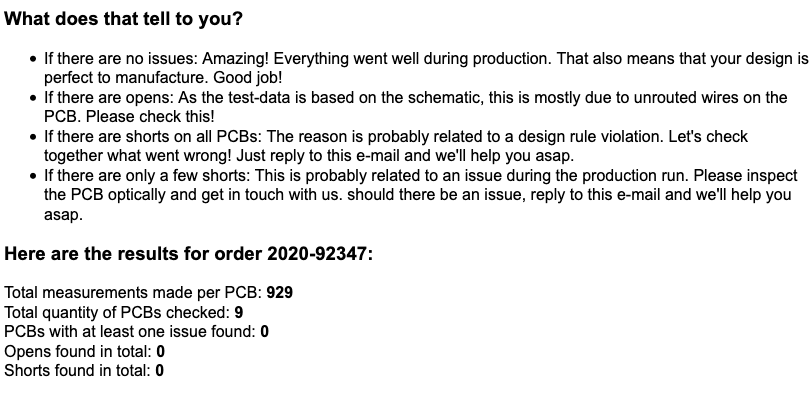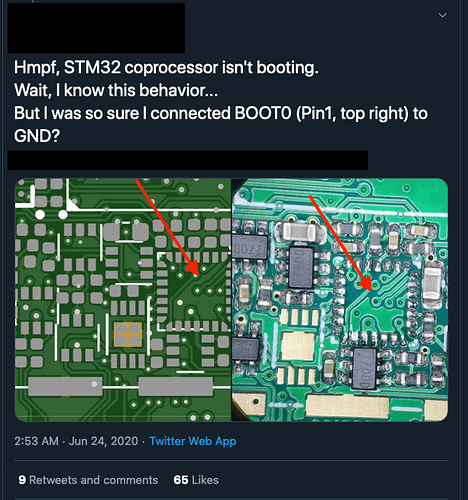Today we are introducing AISLER Smart Tests. A new way we run electrical tests. We believe the way the industry runs electrical tests is conceptually flawed and we wanted to provide a better solution to allow you to make your design more robust for production.
tl;dr Electrical Tests are now based on your own netlist, should you provide it. Results are communicated before we ship your order hence allowing you to validate your design even faster.
Understanding the problem with today’s electrical testing approach
When a manufacturer talks about electrical test, PCBs should be tested with a so-called flying probe machine. It’s a machine that basically checks the resistance between all connections on the PCB. That way it will identify short circuits or open connections. This process is run both in prototyping and in series production to ensure that all connections work properly.
But how does the flying probe machine know what to test for? The test data is provided in a specific format that defines test points and the interconnections between them. From a customer perspective it should resemble the netlist or schematic without any details about the parts. So where does that data stem from? The data is standardized as IPC-356 and most manufacturers generate that data from the copper and soldermask layers. Hence, it is mostly reverse engineered from your PCB Layout. Since this is no easy task, manufacturers will have to have know-how on how to generate that data properly. This approach however, is fundamentally flawed as the test leaves you as a customer in the dark what is actually tested. Because the question is: do we want to test whether the production went well OR do we want to check if the final PCB matches our schematic.
In prototyping this is critical. Take this example which showed up on our Twitter feed one day. It doesn’t really matter which manufacturer was used here, it’s the same process basically everywhere.
According to the electrical test the production went well! The electrical test succeeded as all connections were fine. From the perspective of the manufacturer it was an excellent job and it actually is. The issue here is the netlist which was used for testing. It was built after modifications to the copper layers (on a quick side note: Every manufacturer does this, which is why we have our Rendering Guarantee in place). This is okay if we want just check for issue during production. If we want to check if any modifications to the copper layers somehow violate the netlist this is not sufficient.
This is how most PCB manufacturers handle electrical testing. It’s fine to spot issues during production but does not help to acutally validate the functionallity of the final PCB. Beside that it’s a complete blackbox to us developers. We test something based on specifications we don’t have. Would you do that in software engineering?
Enough explanation, let’s try to change this!
Introducing AISLER Smart Test: The Electrical Test on Steroids
In our opinion reverse engineering the netlist from the PCB layout is a workaround. As every PCB layout (should) have a schematic or at least a netlist, why are we not going to use this? Starting on July 6, 2020 this is how we run electrical tests by default – should you provide us with an IPC-356 File. During import of your projects the netlist is extracted and is used to run the electrical test. Native support is currently limited to KiCad and Eagle, but we are working on supporting more PCB Design Tools natively in the future. Should you not provide an IPC-356 File, you will get the regular electrical test and not AISLER Smart Test.
So, what makes an Electrical Test an AISLER Smart Test. We believe it should be simple and you should be able to parse the results quickly. So we’ll automatically dispatch an e-mail with a test-report like this:
As we dispatch this before you actually receive the goods, you will already know what to look for. Hence you can check whether the issue was related to production, design rule violations or if the test data was just misleading. What matters is, in the end, you will have a layout which is not just perfect to manufacture but also perfect to test.
At AISLER we care deeply about speed and simplicity, and we hope this feature will allow you to iterate even quicker to production.
Cheers



